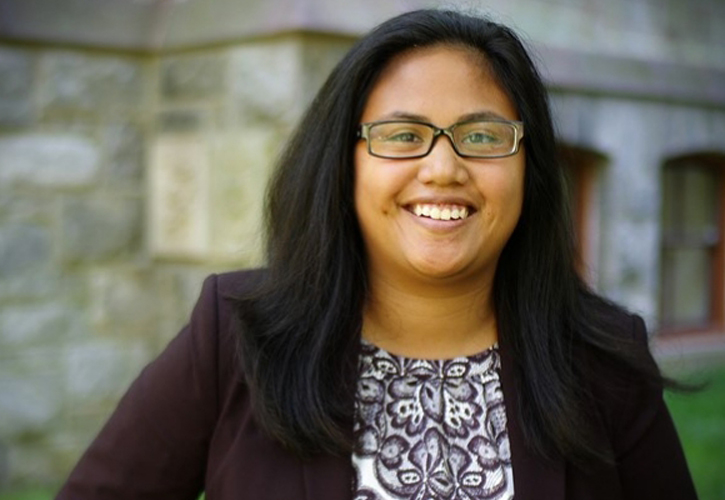College of Arts and Sciences Newsroom

University of Dayton health communicator publishes research on using entertainment to teach children about COVID-19
By Ashley Junkunc ’21
University of Dayton health communication expert Angeline Sangalang researched how shows, such as popular children's show Sesame Street, are being used internationally to teach children about COVID-19.
The research, published in Health Communication’s Public Health Communication in an Age of COVID-19 issue, analyzes the use of entertainment education (EE) 一 a communication strategy that conquers social issues by educating viewers through entertainment. Sangalang conducted her research by looking at EE COVID-19 responses from three global organizations: PCI Media, BBC Media Action and Sesame Workshop.
Sesame Workshop is the nonprofit educational organization behind Sesame Street, the beloved children’s television show launched in 1969 that has brought iconic characters including Elmo, Cookie Monster and Big Bird into millions of homes worldwide. Sangalang and colleagues analyzed its Latin America’s equivalent, Plaza Sésamo. For example, Plaza Sésamo released a web series that showcased Cookie Monster learning to cook at home during the pandemic since it was unsafe for him to attend culinary school in person.
“You want to educate kids on the risk of the pandemic, but you have to remember that a pandemic is scary,” said Sangalang, a UD assistant professor of communication. “It’s important to frame why it’s important to wash their hands and why they can’t play with their friends in a way that won’t cause irrational fear. Using characters that kids know, love, trust and are familiar with is a way to provide comfort during uncertainty.”
She contributed her research to Health Communication’s COVID-19 issue after Theresa Thompson, the journal’s editor-in-chief and University of Dayton communication professor emerita, reached out with the opportunity.
Working on the piece provided Sangalang with insight into telling stories for domestic audiences in ways that help provide understanding during these unprecedented times. The United States is learning how to pivot media with new strategies 一 something demonstrated by other countries that have prior experience with pandemics.
“COVID is big, it changed our world as we knew it and impacted us in ways no other pandemic has, but the rest of the world had also dealt with Ebola and H1N1 in ways that our country didn’t,” Sangalang said. “A lot of those places have dealt with pandemic storylines and have learned to communicate that information, which were lessons that did not affect us deeply.”
Many times, these storylines relay information subconsciously to the viewer. For example, Grey’s Anatomy and Tiger King are both television shows that educate the viewer without active realization.
“I think it’s interesting how people relied on media throughout the pandemic as a form of escape, mood-management and for information,” Sangalang said. “We process a lot through stories and we learn a lot through watching TV, especially shows that we all get around and talk about.”
Sangalang specializes in research about how the media environment contributes to health behavior, and the potential for using narrative messages in health campaigns to minimize message resistance and promote health outcomes. In 2019, the Journal of Communication published research by Sangalang and colleagues on using narrative correctives to combat misinformation about organic tobacco. This research embedded stories with corrective information and proved to solve practical problems that required a solution.
Joseph Valenzano, professor and department of communication chair, applauds Sangalang for her contributions to her discipline and exemplary demonstration of bringing experiential learning to the classroom.
“She has elevated our research in health communication and media, and translated that work to our classes for students in engaging ways,” Valenzano said. “Her work on media messages and how they can educate the public on health issues has important practical implications for the public.”
Sangalang teaches an undergraduate research methods course in which students learn the basics of conducting research and understanding data through statistical analysis software. She enjoys integrating her own research into class lectures.
“I like including research in teaching, because I hope it shows why it’s important 一 I think it’s a hard thing to sell to students,” Sangalang said. “Research helps connect what we might be learning in class to how it’s used in real life and how it can help you, as a student, be more marketable as a professional.”
For more information, please visit the UD Department of Communication website.
